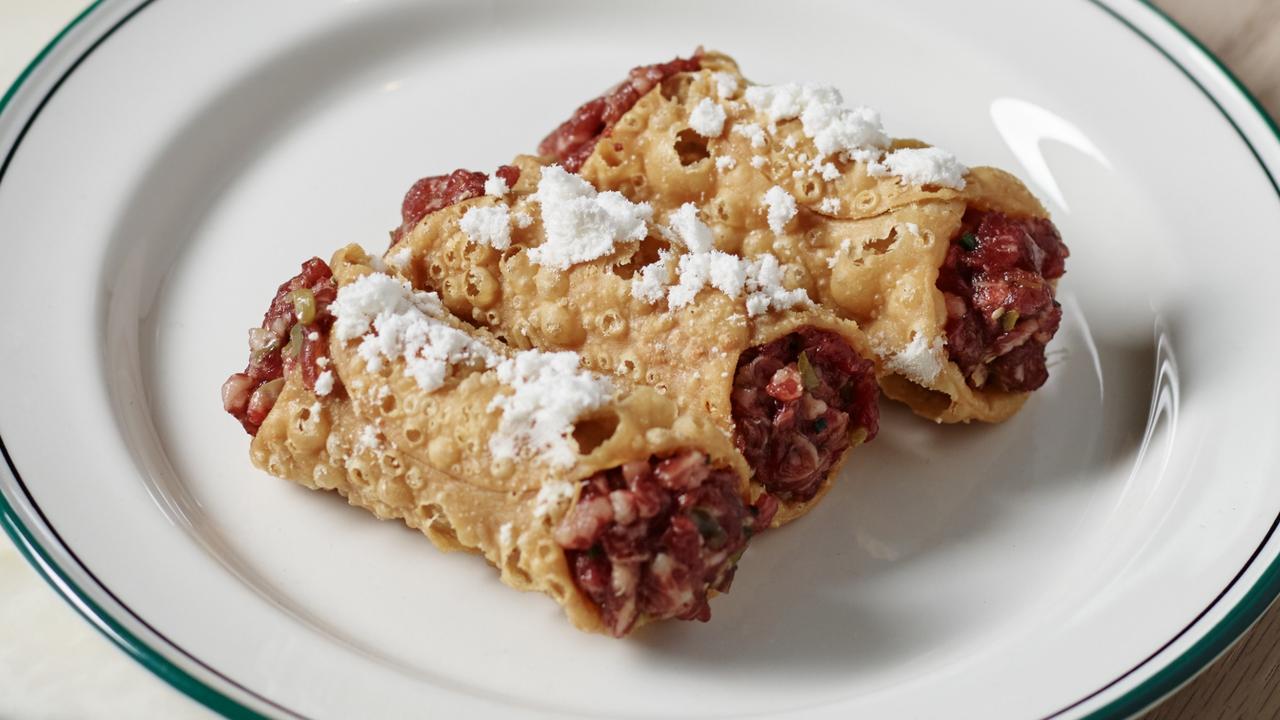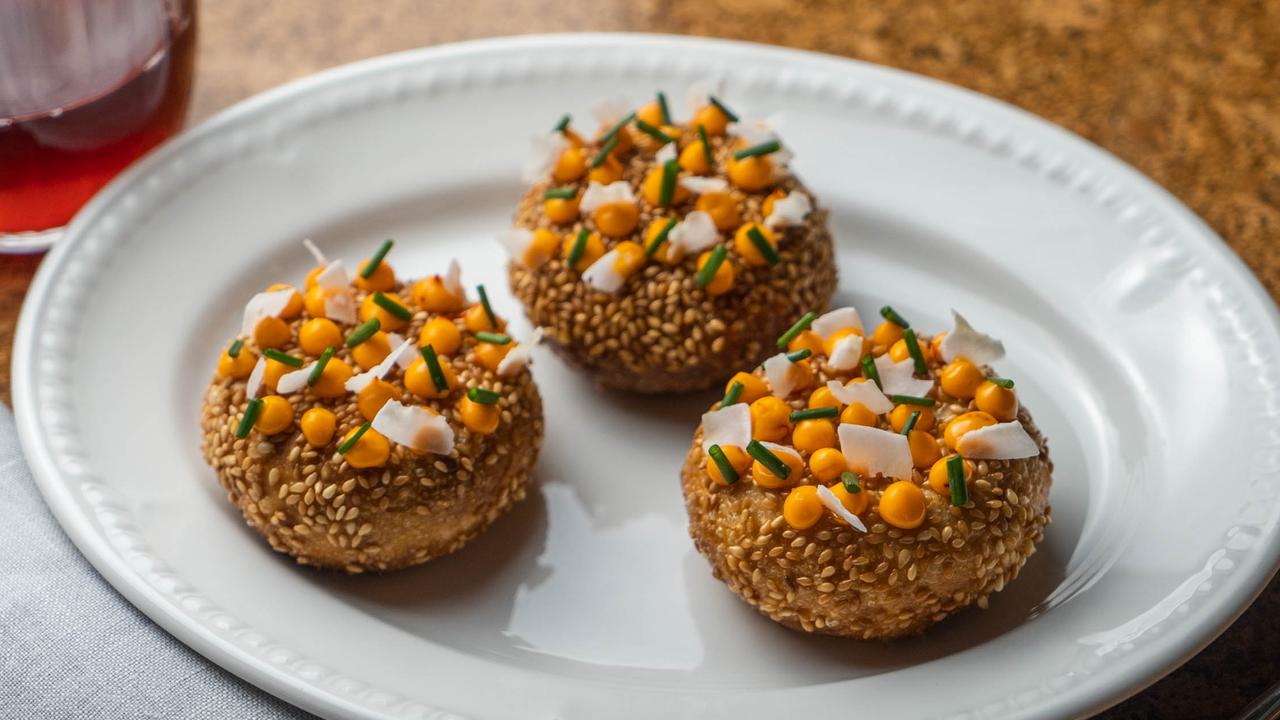How to make souffle: Melbourne chefs share their secrets
CELEBRATE Bastille Day like the French by baking (and eating) the perfect souffle. Our city’s best pastry chefs share their secrets on mastering the souffle — and it’s not as hard to cook as you’d think.
delicious.100
Don't miss out on the headlines from delicious.100. Followed categories will be added to My News.
- A guide to the best doughnut shops in Melbourne
- Where to eat at Fountain Gate
- Merne a house of Light and shade
- Where to eat at Eastland
WHEN IT comes to a meal’s full stop, no cuisine hits the sweet spot quite like French.
Eight ways to celebrate Bastille Day in Melbourne
There are classic desserts for every good reason — whether it’s the sticky pleasure of a tarte tatin, the boozy goodness of a rum baba or the simple satisfaction of cracking into a crème brulee, these are desserts immune from fad and fashion thanks to the fact they are so damn delicious.
With our French community about to celebrate Bastille Day on Friday, we asked some of the best in the biz for a masterclass in French confection.
Philippe Mouchel shares his perfect souffle, Philippa Sibley creates a decadent crème caramel, while Guilluame Brahimi gets fired up with a plate of crepes suzette.
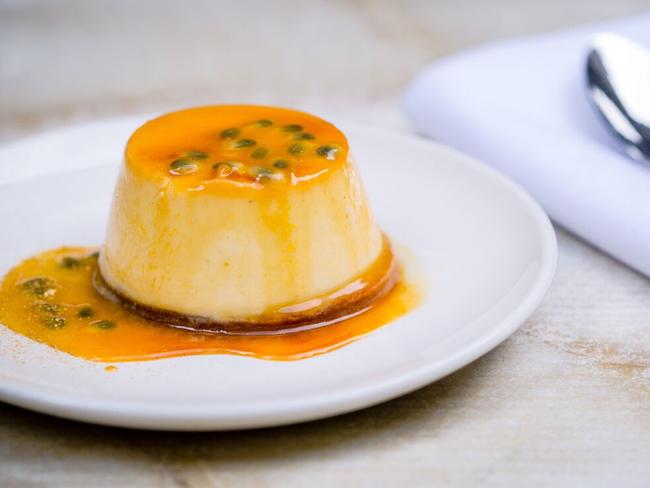
ON CLOUD NINE
He’s the thinking chef’s chef who’s trained a generation of our best and brightest, with Joseph Vargetto (Mister Bianco) and Scott Pickett (Estelle, St Crispin) just two who have learnt by the stoves of this culinary giant.
While Philippe Mouchel might be best known throughout the city for his rotisserie chook (and long may it continue to turn) he’s more famous with Francophiles for the voluptuous velouté, the perfect parfait and — or course — the sublime souffle that come out of his kitchen.
The chef, who is an ambassador for Le Cordon Bleu Australia — where the next gen of cooks are schooled in classic French culinary techniques — says the timeless appeal of a souffle is easy to understand.
“There is such wow factor with a souffle. It’s the classic French dessert,” he says.
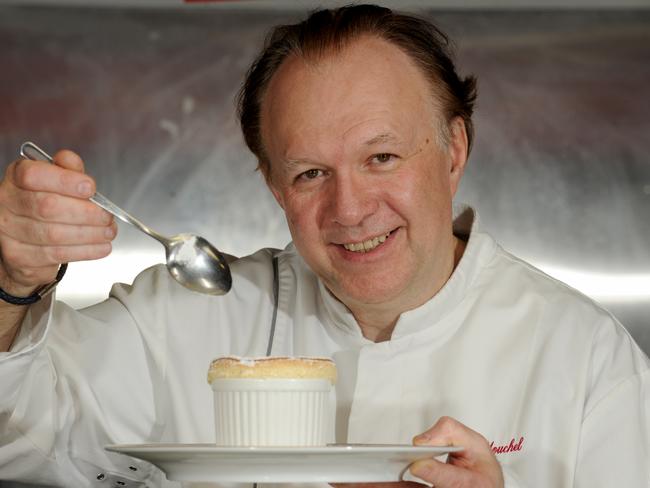
Master’s apprentice
While he has long mastered the art of getting a cloudlike rise to this dish, his first attempt as an apprentice went the way of most mere mortals.
“I was so excited, I kept opening the oven every five minutes to see if it was working. The chef got very upset with me,” Philippe, also a master of understatement, says.
“Don’t open the oven” is his first, and never forgotten, rule to successful souffle.
He says it’s not as hard a dish to master as many might think, though he cautions that using — and following — a recipe is the key to success.
Other pieces of advice include making sure the oven (fan forced) is hot, don’t over-whisk the egg whites and ensuring the custard is well cooked.
“Fold the egg meringue very delicately to the custard with a wooden or plastic spatula,” he says. “Do not use a whisk, you will break the meringue.”
Whisky business
When whisking the egg whites, add a touch of salt and lemon juice, which will help soft peaks form in the meringue, and always use a stainless steel or glass bowl.
Butter each souffle dish twice and sprinkle with caster sugar, before pouring in the custard-meringue mixture. Philippe says it’s important to fill each mould to the top and then flatten with a spatula.
“Use your thumb to go around the inner edge of the souffle mould. This will help the souffle to rise straight,” he says.
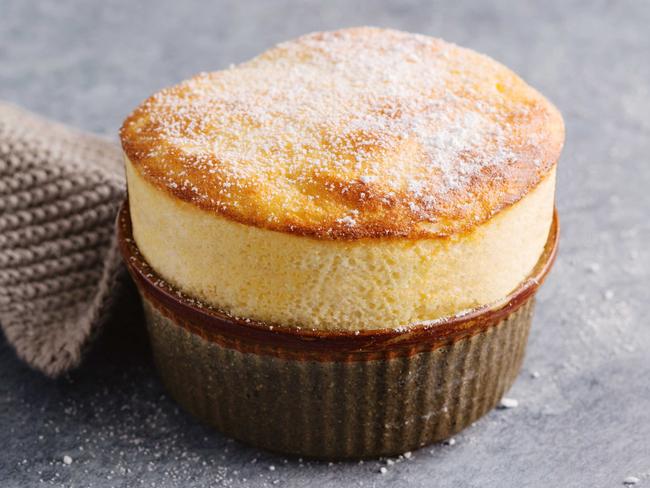
Savoury styles
Philippe says in France, savoury cheese soufflés are as popular as sweet versions.
“You could use goat’s cheese, blue cheese or gruyere cheese. Or you could try a lobster or yabby souffle for something different.”
And when it comes to serving?
“We have a saying about serving a souffle,” he says. “You can wait for the souffle but the souffle cannot wait for you. You need eat the souffle as soon as it comes out of the oven.”
CREME OF THE CROP
“I first made crème caramel while doing a stint at a pub in the Dandenongs, back in the days of yore,” says Melbourne’s queen of sweet treats, Philippa Sibley.
“The recipe was simple enough, very formulaic, with too much sugar for today’s tastes.
“The most important part was the colour of the caramel; it had to be past golden brown. This was well over 30 years ago but I remember tasting one. It was delicious!”
Philippa, who since rising to be one of the country’s best pastry chefs has become one of our best euro-leaning savoury cooks too, says she’s eaten countless crème caramels — many good, some awful, but that the best are still to be found in the brasseries of Paris.
“They’ve been perfected over the decades, they are still the best.”
Closer to home, the head chef at Syracuse restaurant rates the “crème reverse” at Rockpool Bar and Grill as one of the city’s finest.
“They make it large and cut it into wedges like a cake, it’s so elegant and minimalistic yet refined.”
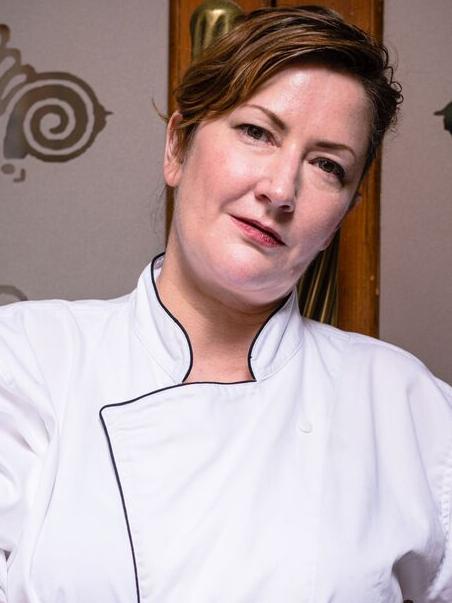
SECRET TO SUCCESS
Philippa has a secret weapon up her sleeve that delivers a perfect crème, ready to top with the caramel.
“I cheat! I once had to cater for a function where several people had egg allergies, so I made a pannacotta instead and set that in the caramelised moulds. It worked a treat and I’ve been using this method on and off for years.”
Pannacotta, which is vanilla cream set with gelatine, takes away the main difficulty with creating the perfect custard-setting the mix.
“Traditionally the mixture has to be cooked in a bain-marie in a very low oven, below boiling point to set the eggs. If it boils it ruins the texture and the egg flavour is intensified and unpleasant.”
DARK AND DELICIOUS
The most important element to the dish is the caramel.
“It has to be dark — just beginning to smoke — but not too dark or it will be bitter,” Philippa says. “As soon as your sugar starts to colour don’t leave its side. I can’t tell you what a smoky, black mess you’ll end up with and it will be a nightmare to clean the pan!”
Philippa likes to add a touch of boiling water to the caramel when it’s as dark as she wants it. “This arrests the cooking and keeps the caramel less granite like and results in a better sauce and less waiting time,” she says.
FRUITY AND FINE
Philippa says adding fruit into the mix can add a fresh dimension to the dish, with orange and passionfruit both working well with the cream and the caramel.
But she cautions: “Be sure to heat anything you wish to add to caramel because if you add cold liquid you’ll shock the caramel and end up with a boulder of hardness that will take ages to dissolve.”
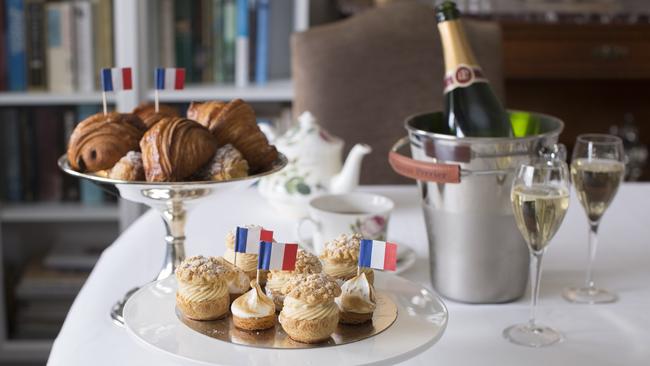
Crepe expectations
With all the theatre of the circus, this classic dessert was the fiery full stop to every 70s dinner party worth its Blue Nun.
But its charms are as relevant today as back then — for whisper thin crepes teamed with the tang of citrus and the subtle bite of booze will never go out of fashion.
It’s no wonder, then, crepes suzette hold happy memories for so many of us, including Guillaume Brahimi.
“It’s a dish I associate with very special times when I was a child,” the Bistro Guillaume chef says.
“My grandmother used to make crêpes suzette for all special occasions and it was always such a treat — and so delicious!”
While she never shared her secret recipe with Guillaume, he would always keenly watch her as she went into action and reckons his version stacks up.
“Her crepe recipe was hand’s down the best, but my recipes reflect hers and are as delicious, if I do say so myself!”
Steps to success
The first step to mastering this dish is to use a good-quality, non-stick crepe pan, he says.
For perfectly thin crepes, pour a small amount of batter onto the hot pan, swirling until it’s lightly coated. Pour any excess back into the bowl.
On the sauce
With so few ingredients in the dish, there’s little room to hide. To elevate the sauce, Guillaume says to add some orange zest to give it an extra zing.
“And only use Grand Mariner, but not too much as it will overpower the dish.
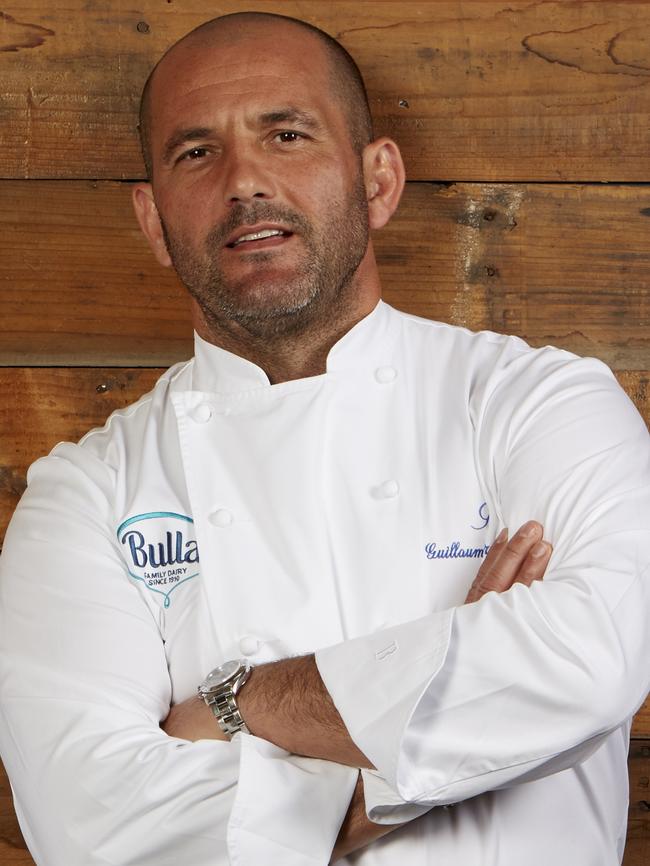
Finishing touch
“You have to serve these immediately, with a scoop of good quality vanilla ice cream,” he says namechecking Bulla Creamy Classic ice cream as his preferred scoop.
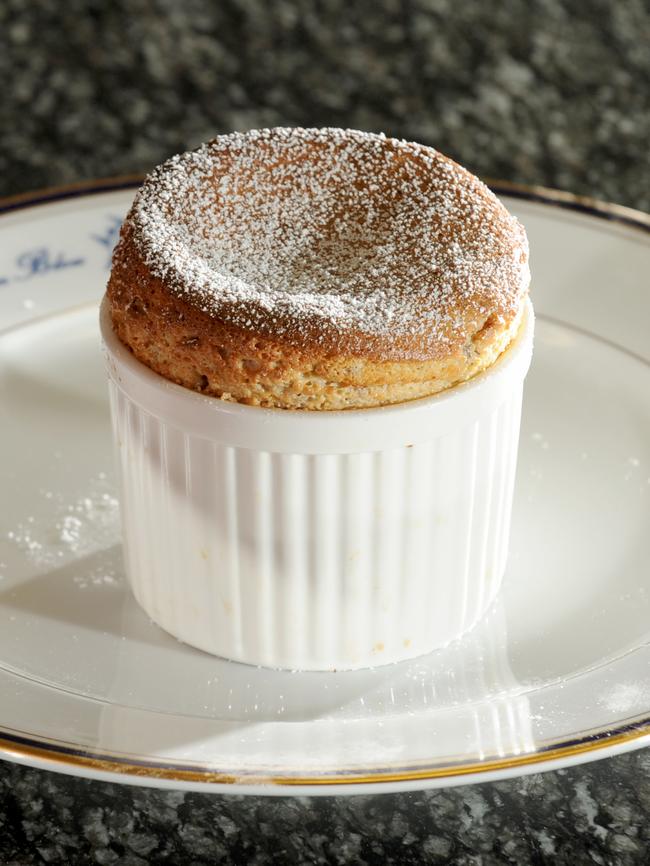
Bastille Day dining
House of Wine and Food
This new Port Melbourne eatery will celebrate all through the week, with Parisian high tea featuring French bubbles and pastries from Agathe Patisserie offered Wednesday, Thursday and Friday from 2pm-4pm ($55 a head). On Bastille Day a three course set menu will be served for lunch and dinner ($80 a head) while there will be regional food specials offered across the week. Bookings: thehouseofwineandfood.com
Syracuse
Join Philippa Sibley for a five-course French feast on Friday. Held in the stately Syracuse dining room in the city, Philippa will serve Normand gratine, confit de canard and her Sauternes crème caramel, all matched with French wines. Price $145 a head, bookings: syracuserestaurant.com.au
Eureka 89
Celebrate all things red, white and blue while gazing across Melbourne’s twinkling cityscape from on high. Eureka 89 will serve French-inspired cocktails, beers and wines, complemented with a selection of suitably themed sweet and savoury canapés. On Friday from 7pm-9pm, $85 a head, bookings: eureka89.melbourne
Cannibal Creek
Chef Philippe Desrettes will serve a special menu celebrating his French heritage in the West Gippsland winery restaurant all week — with a special dinner on Sat — before he heads back to France for a summer break for a month. cannibalcreek.com.au
French Festival
A celebration of all things France — from workshops, exhibitions, live performances, and, of course, lots of food and wine — the French Festival held on Saturday and Sunday at North Melbourne’s Meat Market promises a weekend filled with gorgeous Gaelic goodies.
Cheese from Milk the Cow, bread from master baker Gontran Cherrier and wine from M Chapoiutier just three of the many providores in the house. From 10am-5pm Sat-Sun. Entry $2. bastilledaymelbourne.com

